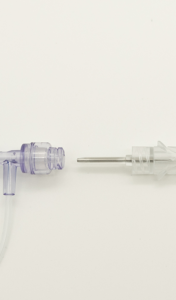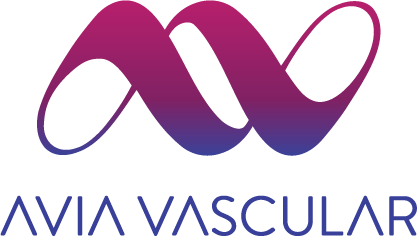Current techniques for drawing and testing blood inside our hospitals are a point of frustration for practitioners and the healing process of patients. Venipuncture remains the standard for understanding the trajectory an individual’s health is moving in, but with each needlestick, the patient becomes more uncomfortable, and the likelihood of a costly injury multiplies. A better way forward deserves exploration. That better way forward comes in the form of a new and exciting medical device, The Ally Needle-free Blood Collection Device.
Testing blood has been the standard for many years in the discovery, monitoring, and understanding of issues of individual’s health. In the United States of America alone, two billion1 blood tests are performed each year. Having a periodic glimpse at the blood allows modern medical practitioners to both make the most informed decisions possible, and tailor treatment to the patient’s needs. Although vital to modern healthcare, each instance of venipuncture may expose the patient to injury and can negatively impact their hospital experience.
The Patient
With venipuncture, the first and most obvious downside is the pain felt by the patient at the time of needle insertion. This pain on its own may not be enough to warrant exploration into better alternatives, but when compounded 20, 30, 50 or more times in a single hospital stay, and the fact that many of these draws are being performed in the middle of the night, the hurdle that this poses to healing and recovery becomes a real factor.
Diving below the surface, additional issues are found in our blood collection procedures. From expecting mothers to patients with diabetes, patients spending a longer time in the hospital are at a greater risk of vascular depletion and infections as the time and volume of blood collection continues to increase.
https://www.ncbi.nlm.nih.gov/pmc/articles/PMC6058193/#:~:text=Diagnostic%20blood%20testing%20is% 20the%20most%20common%20medical%20routine%20performed,primary%20care%20settings2%2C3.
The Patient Experience
On an equivalent level of importance as the patient’s experience is the patient’s perception of their treatment. Neurobiological research conducted at Stanford University concluded that “the placebo effect, which stems in part from an individual’s mindset or expectation to heal, triggers distinct brain areas associated with anxiety and pain that activate physiological effects that lead to healing outcome.”[1]
Patient experience can affect a provider’s experience as well. Because some patients may be difficult to stick, additional personnel may be required to execute a blood draw, in the end costing time and money for the practice or hospital. Patients may refuse future blood draws, become uneasy, or, in some cases, become violent when faced with yet another needle stick, putting providers in harm’s way. Not to mention that each time a needle is involved in a procedure or draw, the provider is exposed to NSI, which can carry a significant cost.
Although additional research is yet to reveal the extent of these powerful forces acting on either the benefit or detriment of a patient, with the existence of a correlation, creating systems and procedures that work to uplift patients will have the possibility to out-perform hospital systems which do not put an emphasis on the patient’s experience. This leaves us with many viable starting points looking at what makes a patient confident in their healing process and the care that they are receiving. Putting our focus into blood collection is a clear winner when it comes to opportunities to enhance patient to provider relations. This is evident in the UCSF Medical Center’s “Think Twice, Stick Once”[2] campaign aimed at reducing unnecessary venipuncture to improve both patient moral and medical outcomes.
The Hospital
Hospital systems face significant challenges when it comes to venipuncture and the downsides that were discussed previously. Negative associations with a hospital can contribute to patients selecting different hospital systems in the future, lower patient reviews, and longer stays for outpatients or patients receiving infusions, resulting in additional cost for the facility, whether through additional personnel or more equipment.
When it comes to injuries caused by sharps, they have been known to payout over $4,000 on average per injury[3] with a total economic burden of anywhere from $188M/ year to $591M/ year[4]. With a national occurrence of about 236,000[5] cases per year, this issue can end up costing over a million dollars for one incident when it progresses to a blood born illness after factoring in the additional testing, follow up tests, lost time, and disability payments[6].
Failed Alternatives
Hospital patients staying overnight typically are given a PIV catheter for the infusion of medications. While some hospital systems try to aspirate blood through these catheters directly, they often face unacceptably elevated levels of hemolysis. The levels of hemolysis have been known to range from 3.3% all the way up to 77%8 of samples. When hemolysis occurs, the sample must be thrown out, in which the patient must be stuck again to redraw their blood. These attempts can contribute to catheter failure and even vascular depletion.
The Viable Solution
The Ally by AVIA Vascular provides the alternative that practitioners have been waiting for. The Ally is a medical device which is compatible with most PIV catheters, allowing reliable needle-free blood collection. Allowing practitioners to access a patient’s blood quickly and efficiently without having to introduce another needle provides an experience that enhances how practitioners and patients feel about the hospital experience.
 The Ally works by giving practitioners a better way to access free flowing blood rather than requiring additional needles sticks and/or vessel trauma. The device is designed to thread directly into the patient’s PIV catheter where the blood collection tube can then be
The Ally works by giving practitioners a better way to access free flowing blood rather than requiring additional needles sticks and/or vessel trauma. The device is designed to thread directly into the patient’s PIV catheter where the blood collection tube can then be
advanced by the practitioner in a slow and controlled way which also provides haptic feedback simultaneously. This unmatched experience is made possible through the support of Ally’s internal flow tubing throughout the movement into the vein. Once fully deployed, the practitioner operating the Ally can choose their preferred method of needlefree blood collection from the female luer of the Ally device.
Conclusion
In conclusion, blood collection is a vital part of our medical systems. By improving blood collection, we can improve the landscape of medicine. The Ally needle-free blood collection device is the best option when it comes to collecting blood during an in-patient medical stay. By using Ally, hospitals can significantly reduce costs, improve outcomes, and significantly increase the satisfaction of both patients and providers all while reducing pain and boosting hospital morale.
If you are ready to bring your hospital system to the next level, talk to your administrators about the Ally needle free blood collection device. The Ally device is ready to make a difference in the lives of your patients and providers on all levels of the hospital system.
[2] https://www.medpagetoday.com/hospitalbasedmedicine/hospitalists/50708
https://www.sciencedirect.com/science/article/abs/pii/S0009912013000489#:~:text=In%20a%20recent%2 0critical%20review,by%20direct%20venipuncture%20%5B

